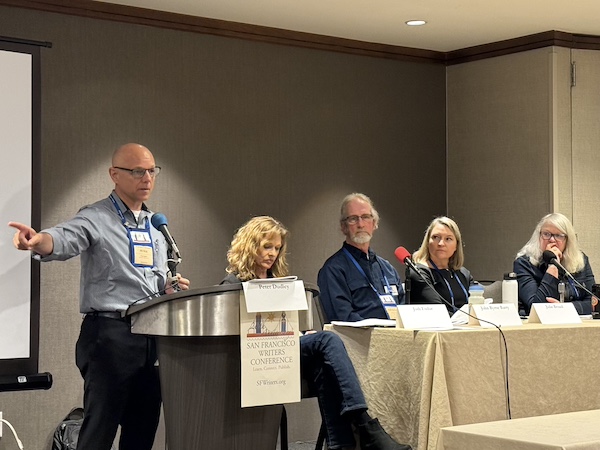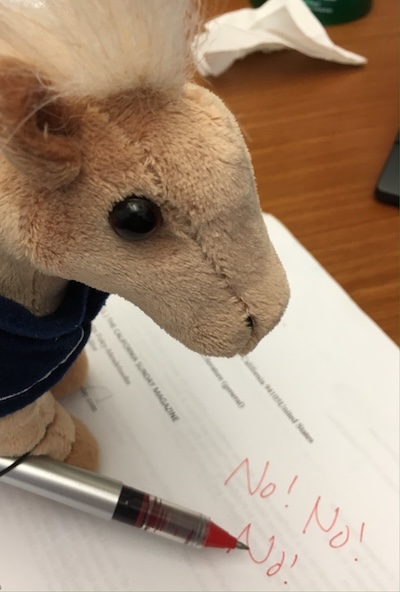Write with clarity and power—four tips
I recently edited and published RELIT, an anthology of personal stories of compassion fatigue, from a diversity of experts across a variety of professions and backgrounds. Most of the 17 contributors did not think of themselves as writers before this project. Some even expressed a modest terror of writing.
Yet nearly every one of them has said that writing their chapter was a surprisingly profound and moving experience.
I’m not surprised at all.
People often think they’ve emotionally processed something, until they have to write about it for an audience.
In a safe and supportive setting, with a capable and empathetic guide, the process of writing can uncover deep insights and derive clear narratives from emotionally complicated situations. It is often healing, cathartic, clarifying, and empowering.
I’ve been facilitating writing workshops with cancer patients and caregivers for more than a year, and I come away from every session deeply moved by what participants share. I also witness them processing and healing and growing from session to session.
I’ll be opening up a variety of such workshops in 2025 to give others this same experience. To be notified when the workshops open up, either email me directly or sign up for my email list.
I’ll also be moderating a number of panels at the San Francisco Writers Conference on February 7th, and showing off RELIT at the conference’s Sips & Stories After Dark event that night. I hope you’ll come!

A note about using AI for writing
AI tools are pretty amazing. I use them regularly for initial research, piquing my imagination for new ideas, and summarizing complex topics that are new to me. I sometimes use it to make images for my blog posts.
I never use AI to write content I put my name on, though. Part of that is that despite what companies promise, the copyright law around AI-generated content is far from settled.
Another reason I don’t use AI to write my blog posts, books, or anything else is that I value the act of writing as a powerful self-exploration experience. I write this blog every week in part because I learn something new about myself almost every time.
Posting AI-generated content would be the equivalent of reading someone else’s book out loud to an audience. Anyone can do that. Why even bother? What would I learn? How would I grow?
I’m a professional coach and editor. Why should anyone trust my expertise if it’s not earned by having done the work myself? What value would I provide if I’m just feeding you what AI gives me? Where is the pride in that?
Four tips to writing with clarity and power
If you’re going to write your story, you might as well do it right. I’m not talking about grammar, usage, and proper spelling; those things can be fixed later. I’m talking about focus, vulnerability, honesty, and reflection.
Here are four critical things you need to do in order to write your story such that not only is it a compelling read, it also helps you gain clarity and insight through the process.
1. Find your focus
When you start, you may have some idea what your story is. You are probably wrong, but that’s okay. Most of my blog posts start out with one premise, and by the time I’ve finished, the premise has evolved and clarified.
Most people start too broad in scope when they sit down to write their story. They think the story and lessons need to be epic or sweeping in scope. They worry that the reader won’t have all the background and detail that make the story feel so rich to the one telling it. In truth, all that detail and background just get in the way.
Focus in on the one primary message, lesson, or arc—the story’s essence. In RELIT, each chapter has a structure that supports that primary essence. Some are personal story with lessons sprinkled along the way, others are focused on the message illustrated by anecdotes. But every chapter has its own primary essence, and every word supports that essence.
2. Imagine an audience
Who will read this when it’s published? Even if you don’t intend to publish it, who is it meant for? Don’t say “myself.” If you’re only writing for yourself, then you’re just journaling. You’re just putting down your own internal dialog onto the paper.
When you have an internal dialog, it all naturally makes sense because whatever you say to yourself, you will always understand it.
When you have to articulate your thoughts to another person, however, you have to work to find the words that will make the audience understand. This process forces you to get very clear about what you think and what you mean because sloppy language exposes sloppy thinking.
3. Get almost naked
Creativity is an act of vulnerability. The closer you get to truth in your writing, the more exposed you will feel. The more truth you expose, the more powerful your writing will be. The profound growth, insight, and healing come when you have stripped away all the bubble wrap and are facing the unpadded truth.
Be careful not to over-expose, however. In every powerful story, there is a line where important truth crosses over into horrifying grotesqueness. Get close to that line, but do not cross it.
4. Get a professional’s feedback
There’s a truism in the publishing industry that you should never act as your own editor. I don’t believe that—I think it is possible to play both roles when working on a single project.
That said, there’s tremendous power in having an experienced professional read your work and comment on it. Again, this is not about grammar, punctuation, or spelling. This is about looking for the unexplored themes lurking just below the surface. It’s about asking the brutal “so what” question for every part of your story. It’s about pointing out what’s missing.
I have found, when editing the work of others, that giving just one or two of those comments can open up entire new lines of thought and expose insights that the writer hadn’t even known they were writing about.

Free consultation
Looking for more fulfillment, joy, or direction in your life? Want to be a more courageous leader? Contemplating a career change? Have a book in you that you need to write?
I can help. Schedule a free coaching session now.
Figure out your core values for free
This simple worksheet helps identify your core values. Many of my clients find it surprisingly eye-opening, and it’s helped people make some big life decisions. Get it here.
Download my chapter from RELIT free
Compassion fatigue can hit anyone in a caring role. RELIT: How to Rekindle Yourself in the Darkness of Compassion Fatigue provides practical, relevant, actionable advice on avoiding and overcoming compassion fatigue and caregiver burnout. Seventeen different experts from a variety of backgrounds, cultures, and professions tell their personal stories and share their hard-earned wisdom in this book that’s been called a “must-read for anyone in a caring role.”
Download my chapter for free, entitled Show up. Try hard. Be nice. Professional coaches who regularly help other people work through their life and work traumas must pay close attention to self-regulation and our own personal resilience, or we can easily get burned out.
My chapter, based on my own experience with compassion fatigue for the first time, explains the things I do to stay centered, stay focused, and bring my “A Game” to every single client, every time.




0 Comments